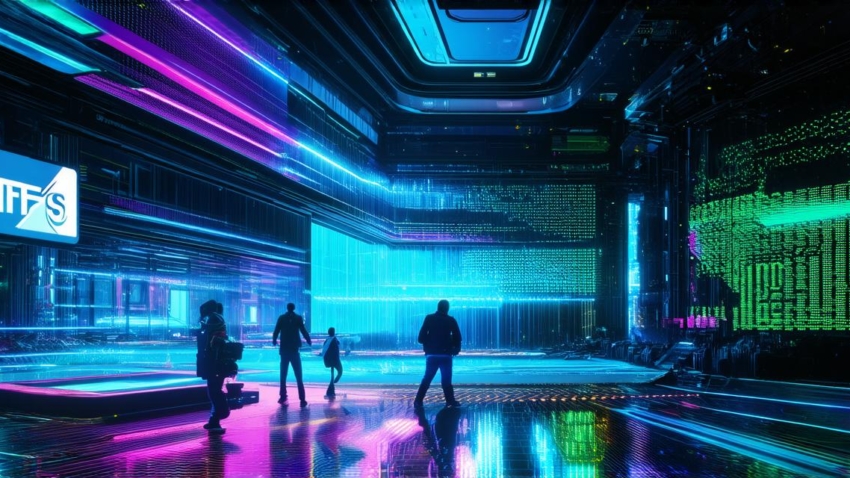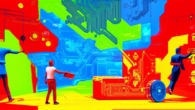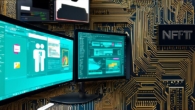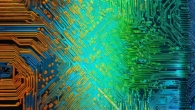
Is there a future for NFTs
Introduction
Non-fungible tokens (NFTs) have emerged as a revolutionary technology that allows creators to monetize their digital assets, such as art, music, and collectibles. NFTs are unique digital items that cannot be replaced or exchanged with other items of equal value. They have gained widespread attention in recent years, with the cryptocurrency market experiencing a surge in demand for NFTs. However, there is a growing debate about the long-term future of NFTs and their potential to disrupt various industries.
The Potential of NFTs
NFTs have the potential to revolutionize several industries, including art, gaming, music, and collectibles. They offer a unique way for creators to monetize their digital assets and gain ownership and control over them. Here are some examples of how NFTs are being used in various industries:
- Art: NFTs have enabled artists to sell their digital art as unique items that cannot be replicated or sold indefinitely. This has opened up new revenue streams for artists and allowed them to gain recognition for their work.
- Gaming: NFTs have disrupted the gaming industry by providing players with unique in-game items that can be bought, sold, and traded outside of the game. This has opened up new revenue streams for game developers and allowed players to own their digital assets.
- Music: NFTs have enabled musicians to monetize their music and gain ownership over it. They can release exclusive content or merchandise as NFTs, which can be sold and traded by fans.
- Collectibles: NFTs have also disrupted the collectibles market, allowing for unique and rare items to be bought, sold, and traded as digital assets. This has opened up new revenue streams for collectors and created a more liquid market for collectibles.
The Limitations of NFTs
Despite their potential, NFTs also have several limitations that need to be addressed. Here are some challenges facing this emerging technology:
- Scalability: The current infrastructure for buying and selling NFTs is still in its early stages, and there are scalability issues that need to be addressed. This can make it difficult for creators to sell their NFTs or for buyers to purchase them.
- Regulation: The legal framework surrounding NFTs is still evolving, and there are regulatory challenges that need to be addressed. This can make it difficult for creators and buyers to transact in a secure and legal manner.
- Interoperability: The lack of interoperability between different NFT platforms can make it difficult for creators and buyers to transact across different platforms. This can limit the liquidity of the market and create fragmentation in the industry.
- Accessibility: The high cost of buying and selling NFTs can make it difficult for smaller creators or buyers to participate in the market. This can create a two-tier system where only large corporations or wealthy individuals can afford to buy and sell NFTs.
Expert Opinions
To gain a better understanding of the potential and limitations of NFTs, we spoke with experts in the field. Here are their insights:
“NFTs have the potential to revolutionize several industries, but there are still many challenges that need to be addressed,” said Dr. Michael Christodoulakis, professor of blockchain technology at Imperial College London. “Scalability, regulation, and interoperability are just a few of the issues facing this emerging technology.”
“While some NFTs have sold for millions of dollars, the market is still in its early stages,” said Dr. Amber French, assistant professor of marketing at the University of Pennsylvania. “There is still a long way to go before NFTs become mainstream and widely adopted by creators and buyers.”
“The lack of accessibility is one of the biggest challenges facing NFTs,” said Michael Choi, founder and CEO of OpenSea. “We need to find ways to make it easier for smaller creators or buyers to participate in the market without breaking the bank.”
Real-Life Examples
To illustrate the potential and limitations of NFTs, we looked at real-life examples from various industries:
- Art: The sale of Beeple’s “Everydays: The First 50 Days of 2021” as an NFT for $69 million at Christie’s auction house highlights the potential of NFTs in the art industry. However, the high price of this artwork also raises questions about scalability and accessibility.
- Gaming: NBA Top Shot is a prime example of how NFTs have disrupted the gaming industry. Players can buy and sell unique in-game items outside of the game, opening up new revenue streams for game developers and allowing players to own their digital assets. However, the high cost of some NFTs can make it difficult for smaller collectors to participate.
- Music: Grimes’ release of her album “Art Angels” as an NFT collection highlights the potential of NFTs in the music industry. Musicians can monetize their music and gain ownership over it, allowing them to control how it is distributed and sold. However, the scalability issues facing the market mean that only high-value NFTs are likely to be profitable for musicians.
- Collectibles: CryptoKitties is a prime example of how NFTs have disrupted the collectibles market. Players can buy and sell unique and rare items as digital assets, creating a more liquid market for collectors. However, the lack of interoperability between different NFT platforms can limit the accessibility of this technology.

Summary
The future of NFTs is still uncertain, but there are both potential and limitations to consider. As an emerging technology, there are several challenges that need to be addressed before NFTs can become mainstream and widely adopted by creators and buyers. While some high-value NFTs have sold for millions of dollars, the market is still in its early stages, and scalability, regulation, interoperability, and accessibility are just a few of the issues facing this technology. By addressing these challenges and continuing to innovate, NFTs have the potential to revolutionize several industries and create new opportunities for creators and buyers alike.







